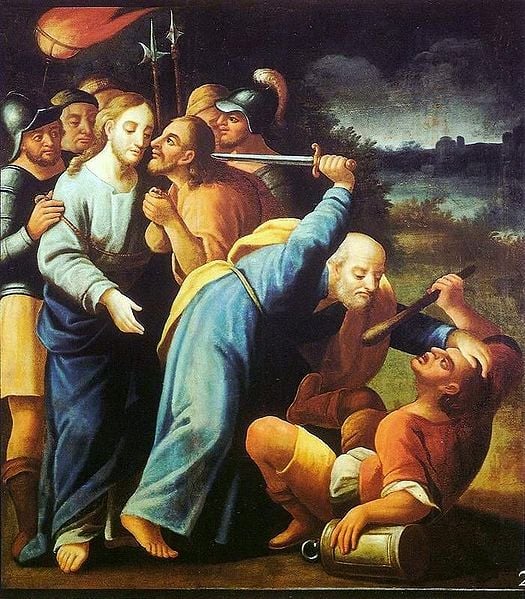Domestic violence is disturbingly prevalent in the world at large. Worldwide, most estimates suggest 1 in 5 women has been abused by a man. When you add in violence perpetrated against men, children, and the elderly, it’s a sobering thought. And in some communities, domestic violence is more common than not. “Domestic Violence Against Women: A Systemic Review of Prevalence Studies,” a 2009 article from the Journal of Family Violence, compiled data from 134 studies, and their results were grim. They found that in some regions of the US, as many as 70% of women experience domestic violence (Alhabib, Nur & Jones). It’s little wonder that the same study describes domestic violence as an epidemic, an assessment supported by the researchers’ finding that the prevalence of domestic violence has increased over time.
For members of the Church of Jesus Christ of Latter-day Saints, it’s just as disturbing to admit that domestic violence is alive and well, and in our midst. While I can’t provide specific statistics on the prevalence of domestic violence within the church (and I wouldn’t be so foolish as to guess), I can share some of the evidence I’ve encountered through firsthand and secondhand individual accounts. When I was growing up, my mother told me the story of a woman she had been good friends with years before. This woman married an older man, and shortly after the wedding he began abusing her. When she went to her bishop for counsel, his advice was, “Maybe he wouldn’t hit you if you were a better wife.” My mother’s friend eventually left her husband, but she also left the church.
In another instance, a friend of mine was sexually abused by three separate individuals while she was growing up – all of the individuals were living with her family at the time, and two were related to her. When she told her mother, her mother at first couldn’t believe her. None of the perpetrators faced church discipline, and she described to me the horror of watching one of her abusers administer sacrament. When I attended the Clothesline Project (dedicated to fighting the cult of silence surrounding abuse) at Utah Valley University in 2005, I found similar sentiments expressed by survivors: I’ve been abused, and he still holds a temple recommend.
While I’d like to think that the many accounts I’ve heard are anomalies, the consistency with which I continue to hear these accounts leaves me doubtful. For instance, one semester I asked students in a Creative Writing class at Brigham Young University to write out their autobiographies. At least 30% of the students had experienced abuse as a child. When I told my mentor, he nodded and indicated that the prevalence of abuse was not unusual for this assignment.
The Church is clear in its anti-abuse stance, but we still face systemic problems. In addition to local leaders who generally lack the training to help victims, ward communities can be volatile toward victims whose perpetrators are well-liked. As Whoopi Goldberg made us all aware in her desperate defense of a rapist, nobody wants to see abuse in their friends. Years ago, a woman from the ward where I grew up, whose husband had served as bishop in the past, sought a divorce and revealed that he had abused her for years. Many accused her of lying, certain their friend and former bishop would never do something so atrocious. In other cases, victims who are unable to acquire a restraining order find themselves stuck attending the same congregation as their abuser – and given that the only way to attend a new congregation is by moving or by receiving permission from a leader such as a bishop or stake president, some victims may leave The Church simply because it is too dangerous (emotionally, if not physically) to be in an abuser’s presence.
But The Church, and even Mormon culture, can be just as powerful in supporting victims and survivors. Structurally, the church is set up to prevent and eradicate abuse – though that eradication depends largely on the repentance of the abuser. No abuser who has not fully repented, through the proper channels, is worthy to hold the Priesthood, serve in church callings, or participate in temple ordinances. And while local leaders may at times fail to understand abuse, they have a hotline that they are instructed to call for advice on such matters.
Furthermore, when Mormon communities choose to support victims, that support provides emotional shelter that is necessary to healing. When I was first recovering from my own exposure to abuse, everything from Priesthood Blessings to supportive friends and visiting teachers played an important role – particularly in light of how many abusers deliberately alienate their victims. Fighting that alienation through community is essential to helping a victim feel strong enough to seek help. And while many in LDS communities are ignorant about abuse, even that ignorance is changing. For instance, lesson 12 in the current Sunday School manual includes material for discussing abuse. Local leaders can help even more by inviting guest speakers with expertise on the topic. And even when it comes to leaving an abuser, as difficult as it may be for a stay-at-home mother to transition back into the workforce, Latter-day Saints have access to a welfare system that can ease the process.
And all of these benefits relate to the organization. When we consider the benefit the Atonement of Jesus Christ plays in helping victims heal – and requiring and helping abusers repent – it becomes clear that Latter-day Saints have immense resources for combatting abuse.











